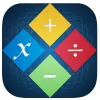Take a look inside 6 images
Math Agent
Pros: Kids will want to play this game and will get absorbed in attack strategies.
Cons: Problems are completed by the system, not the player.
Bottom Line: Although it's highly engaging, save it for play rather than as a learning tool.
Warning! Math Agent is fun and can be addictive. Kids will beg to play during reward time and challenge classmates. Math Agent can be downloaded on up to six devices for "family" play, which could be super useful in the class, as students can challenge friends and watch their scores top the leaderboard. Because students won't get bogged down with computation, teachers can use this tool to drive home concepts and vocabulary after introducing topics.
The Math Agent app is a digital card game that challenges students to use basic computational skills in a gaming environment. In both the single-player and multiplayer challenges, players "attack" by choosing a tech card. These cards range from one of the four operations to various triangle attacks, composite or prime attacks, and even a pi (unstoppable) attack. Opponents can defend themselves with defense cards to limit or negate the damage they may receive. Players are guided through a demo/tutorial and will have playing directions appear on the screen during play. Directions keep the game moving and describe what's needed for each tech card to activate its power. The Challenges section times students as they race to answer 100 single-digit calculations in five minutes. Each challenge successfully completed unlocks a new challenge card.
Teachers expecting game-based learning may be disappointed with Math Agent. The game portion is addictive, but the learning is minimal. Once tech cards and number cards are chosen, any computation is done by the system, so the game can be played without much mental work by students. Although the game does incorporate geometric terms and exponents in addition to prime, composite, and inequalities, the variety of terms doesn't appear to change from the easy to hard levels. Even with its exposure to new terms, teachers should use this with caution, as students are lead to see connections between concepts where there are none. For example, each time a triangle card is chosen, the perimeter of the sides is multiplied by 2. Kids can easily form bad habits if a teacher doesn't carefully de-program these misconceptions.














